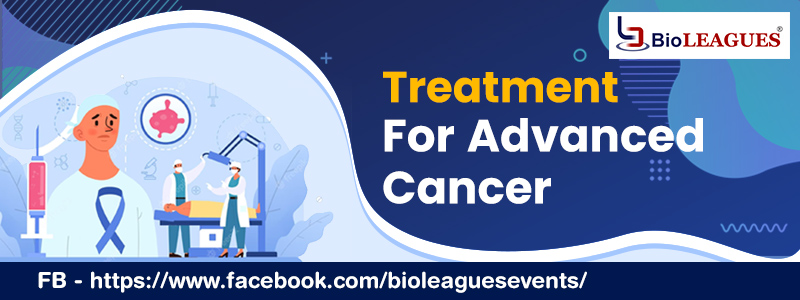When one thinks of cancer treatments, they probably think of chemotherapy and radiation therapy immediately. This could change soon. Much has happened in recent years to transform the way the disease is and will be treated. As a result, people with cancer and their doctors have more options to choose from, and more are to come. Detailed below are some of the latest treatment methodologies being used to treat cancer patients. Registering for this Cancer Conference 2025 will offer you more in-depth insights than this article does.
- Gene Therapy
- Gene therapy is designed as the introduction of a normal copy of a defective gene into the genome to cure specific ailments.
- The first application of gene therapy dates back to the early ’90s when a retroviral vector was utilized to deliver the adenosine deaminase (ADA) gene to T lymphocytes in those who suffered from severe combined immunodeficiency (SCID).
- Other research has shown that gene therapy can be applied in many rare and chronic human diseases and, more importantly, in the treatment of cancer.
- Close to three thousand gene therapy clinical trials are currently underway, over sixty-five percent of which are linked to cancer.
- Different strategies are being evaluated for cancer gene therapy –
- expression of pro-apoptotic and chemosensitizing genes;
- expression of wild type tumor suppressor genes;
- expression of genes capable of eliciting specific anti-tumor immune responses, and
- Targeted silencing of oncogenes.
- Partake in this highly anticipated Oncology Conference in India to learn more about the developments taking place in gene therapy.
- One approach relied on administration of the thymidine kinase (TK) gene, followed by administration of the prodrug ganciclovir to help stimulate its expression and induce specific cytotoxicity.
- This has been clinically altered for the purposes of treating prostate cancer and glioma.
- Over the past decades, different vectors carrying the p53 tumor suppressor gene have been evaluated for clinical applications.
- ONYX-015 has been tested in patients with NSCLC and has shown a high response rate when given alone or in combination with chemotherapy.
- To know more about this clinical study, register for these Upcoming Cancer Conferences 2025
- Gendicin, a wild-type p53-carrier recombinant adenovirus in squamous cell cancer of the head and neck, has had similar success, inducing complete disease regression when combined with radiotherapy.
- Nanomedicine
- Nanoparticles are small systems (from 1 to 1000 nm) with particular physicochemical properties due to their size and their high surface/volume ratio. Biocompatible nanoparticles are made use of in cancer medication to help overcome some of the problems associated with conventional therapies, such as –
- low specificity and
- low bioavailability of drugs or contrast agents.
- Therefore, the encapsulation of the active agents in nanoparticles will increase their solubility/biocompatibility, their stability in body fluids, and their retention time in the tumor vasculature.
- Additionally, nanoparticles can be designed to be highly selective for a specific target and to release the drug in a controlled manner by responding to a specific stimulus.
- This is the case with ThermoDox, a liposomal formulation that can release doxorubicin in response to an increase in temperature.
- Find out more about developments surrounding ThermoDox at this forthcoming Oncology Conference, by registering yourself immediately and making sure to participate.
- Nanoparticles are small systems (from 1 to 1000 nm) with particular physicochemical properties due to their size and their high surface/volume ratio. Biocompatible nanoparticles are made use of in cancer medication to help overcome some of the problems associated with conventional therapies, such as –
- Inorganic nanoparticles are commonly made use of as contrast agents for diagnostic reasons.
- Among them, quantum dots are tiny, light-emitting semiconductor nanocrystals possessing special electronic and optical characteristics that make them incredibly fluorescent, resistant to photobleaching and sensitive for detection and imaging applications.
- Associated with active ingredients, they can be promising tools for theranostic applications.
- A study conducted a few years ago highlighted quantum dots coated with poly (ethylene glycol) (PEG) were conjugated to an anti-HER2 antibody and localized in specific tumor cells.
- Taking part in any of the Top Medical Conferences scheduled to take place this year will help you stay up-to-date with all the advancements taking place in cancer nanomedicine technology.
- Extracellular Vesicles
- Electric vesicles are classified into two categories based on their biogenesis.
- Specifically, exosomes are small vesicles of about 30 to 150 nm originating from endosomes under physiological and pathological conditions and released by fusion of multivesicular bodies (MVB) to the cell membrane, while microvesicles (sMV) d A typical size of 50 to 1300 nm, are present in almost all extracellular body fluids and are responsible for the exchange of molecular materials between cells.
- Exosomes are involved in the development and spread of cancer, in the two-way communication between tumor cells and accompanying tissues, and in the building of the microenvironment necessary for pre-metastatic niche establishment and metastatic progression.
- Therefore, circulating vesicles are clinically relevant in the diagnosis, prognosis and follow-up of cancer.
- Exosomes are in fact recognized as valid diagnostic tools, but they can also be isolated and used as cancer vaccines or carriers of nanoscale drugs in the treatment of cancer.
- Save your seat at this forthcoming Medical Conference in 2025 to learn more about extracellular vesicles and their applicability in cancer treatment.
- Today, one of the main issues in cancer diagnosis is the immediate detection of biomarkers (participate in this Medical Conference to learn more about this issue), by non-invasive methodologies.
- Gaining a significant amount of information, before and during tumor treatment, should allow monitoring of cancer progression and the effectiveness of treatment regimens.
- Liquid biopsies to detect circulating tumor cells, RNAs, DNAs, and exosomes have been used as indicators for personalized medicine.
- In recent years, the detection of exosomes has been validated as a reliable tool for preclinical practice in different types of cancer, thanks to the identification of their content –
- dsDNA has been identified in exosomes secluded from plasma and serum of different types of cancer cells, and mutated genes involved in tumorigenesis, such as mutated KRAS and TP53, have been identified as disease predictors.
- Likewise, exosomal AR-V7 mRNA has been used as a prognostic marker of resistance to hormone therapy in patients with metastatic prostate cancer.
- Profiling the gene expression of several RNAs from urinary exosomes has been adopted as an effective diagnostic tool.
- To find out more about gene expression profiling, register for this Upcoming Medical Conference in 2025, today.
- Natural Antioxidants
- Every day, human bodies undergo numerous exogenous attacks from –
- UV rays, as well as,
- air pollution and tobacco smoke,
- Every day, human bodies undergo numerous exogenous attacks from –
that result in the generation of reactive species, including oxidants and free radicals, which are the cause for the onset of various diseases, including cancer.
- Such molecules can likewise be produced as a consequence of the clinical administration of drugs, but they are also naturally produced within our cells and tissues by mitochondria and peroxisomes, and as a result of the metabolism of macrophages, during normal physiological aerobic processes.
- Most high-level Oncology Conferences scheduled to take place this year will delve into detail on natural antioxidants.
- Oxidative stress and radical oxygen species are capable of damaging DNA (genetic alterations, DNA double-strand breaks, and chromosomal aberrations) and other bio-macromolecules, such as lipids (peroxidation and necrosis membranes) and proteins (significantly modifying the regulation of transcription factors and, consequently, of essential metabolic pathways).
- Participate in this International Medical Conference in 2025, to find out more about natural antioxidants and the role they play accelerating cancer treatment.
- The protective mechanisms that our body has developed against these molecules are sometimes insufficient to counter the enormous damage produced.
- Targeted Therapy & Immunotherapy
- One of the primary problems with conventional cancer therapy is the low specificity of chemotherapeutic drugs (participate in these Cancer Conferences 2025 to learn more about this challenge) for cancer cells.
- In fact, most drugs work on both healthy and diseased tissue, causing serious side effects. Researchers have tried hard to find a way to target only the desired site.
- Nanoparticles have aroused great interest for their tendency to accumulate more in tumor tissue due to the enhanced permeability and retention effect (EPR).
- This process, referred to as passive targeting, relies on the small size of nanoparticles, leaky vascularity, and impaired lymphatic drainage from neoplastic tissue.
- Passive targeting, nevertheless, is challenging to control and can induce multidrug resistance (MDR). Active targeting, on the other hand, enhances uptake by tumor cells by targeting specific receptors that are overexpressed there.
- Nanoparticles, for instance, can be functionalized with ligands (to learn more about the role of ligands in cancer treatment, participate in these Cancer Conferences) that uniquely bind to particular cells or subcellular sites.
- Several types of ligands can be used, such as –
- small molecules,
- peptides,
- proteins,
- aptamers, and
- antibodies.
- Folic acid and biotin are small molecules, the receptors of which are overexpressed in tumor tissue.
- A number of nano supports have been co opted with folic acid to help enhance the targeting of ovarian and endometrial cancers.
- Nanoparticles of polyethylene glycol-poly (lactic-co-glycolic acid) conjugated with folic acid delivering docetaxel have increased cellular uptake of the drug by human cervical carcinoma cells.
- Small ligands are inexpensive and can be linked to nanoparticles (find out more about this nanoparticle linking by participating in these forthcoming Oncology Conferences) by simple conjugation chemistry.
- Unfortunately, radioresistance can occur during treatment (save your seat at these upcoming Radiology Conferences 2025 to learn more about this phenomenon), reducing its effectiveness.
- This has been connected to mitochondrial defects; therefore, targeting specific functions has been found to be useful in restoring anti-cancer effects.
- A recent study has demonstrated, for instance, that radioresistance in an adenocarcinoma model of the esophagus is connected to an abnormal structure and size of the mitochondria (to learn more about this phenomenon, register and participate in these Oncology Conferences 2025), and the measurement of energy metabolism in patients has made it possible to discriminate between resistant patients. and sensitive to treatment.
- The targeting of mitochondria with small molecules acting as radiosensitizers is being investigated for the treatment of gastrointestinal cancer.
In recent years, cancer medicine research has made remarkable progress towards more effective, precise and less invasive cancer treatments. While nanomedicine, combined with targeted therapy, has made it possible to improve the biodistribution of new or already tested chemotherapeutic agents around the specific tissue to be treated, other strategies, such as gene therapy, administration of siRNA, immunotherapy, and antioxidant molecules offer new possibilities for cancer patients. On the other hand, thermal ablation and magnetic hyperthermia are promising alternatives to tumor resection. Finally, radiomics and pathomics-based approaches help in the management of large data sets from cancer patients to improve prognosis and outcomes. Hurry and register for this highly anticipated Oncology Education Conference to learn in-depth about all the latest advancements in cancer treatment.




